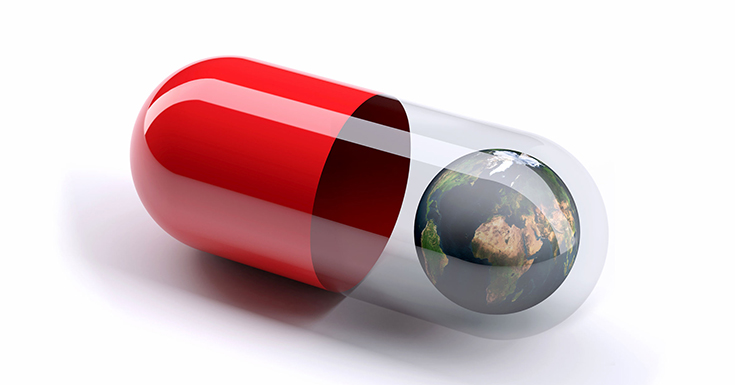New developments in the fight against antimicrobial resistance
Scientists have discovered a way to structurally modify vancomycin to make an already-powerful version of the antibiotic even more potent, an advance that could eliminate the threat of antibiotic-resistant infections for years to come. Dale Boger, co-chair of TSRI's Department of Chemistry, who led the research at the at The Scripps Research Institute (TSRI), said: "Doctors could use this modified form of vancomycin without fear of resistance emerging."

More types of bacteria are becoming resistant to existing antibiotics, increasing the occurrence of lethal infections. Read more about this in CRJ 12:1 (image: Fabio Berti/123rf)
The original form of vancomycin, which has been prescribed for 60 years, is an ideal starting place for developing better antibiotics as bacteria are only now developing resistance to it. This suggests bacteria already have a hard time overcoming vancomycin's original mechanism of action, which works by disrupting how bacteria form cell walls.
Boger called vancomycin "magical" for its proven strength against infections, and previous studies by Boger and his colleagues at TSRI had shown that it is possible to add two modifications to vancomycin to make it even more potent. "With these modifications, you need less of the drug to have the same effect," Boger said.
The new study shows that scientists can make a third modification – which interferes with a bacterium's cell wall in a new way – with promising results. Combined with the previous modifications, this alteration gives vancomycin a 1,000-fold increase in activity, meaning doctors would need to use less of it to fight infection.
The discovery makes this version of vancomycin the first antibiotic to have three independent mechanisms of action. "This increases the durability of this antibiotic," said Boger. "Organisms just can't simultaneously work to find a way around three independent mechanisms of action. Even if they found a solution to one of those, the organisms would still be killed by the other two."
Meanwhile, Yale University scientists have developed a novel chemical process that may lead to the creation of a new class of antibiotics.
"This is one way to focus our talents as synthetic chemists in a direction that can immediately help patients," said Seth Herzon, a chemistry professor at Yale and member of the Yale Cancer Center.
The new process makes it possible to create molecules related to the natural product pleuromutilin from simple commercial chemicals in the laboratory. Pleuromutilin is produced by a fungus and was found to have useful antibacterial properties in the early 1950s. Since then, scientists in academia and the pharmaceutical industry have created thousands of pleuromutilin derivatives by a process known as semisynthesis, which involves chemically modifying pleuromutilin itself. However, a large proportion of these derivatives only vary at a single position in the molecule. A practical full synthesis, which would make a wealth of additional antibiotics possible, has remained elusive.
"We worked on this project for a few years when I started at Yale, but didn't record much success," Herzon said. "The pharmaceutical industry has historically been the driving force behind antibiotics development. However, antibiotics are essentially at the bottom of the list in terms of investment return. Consequently, most major pharmaceuticals have walked away from this area."
This has led to a dearth of new drugs to combat resistance, Herzon added. "As the anti-bacterial crisis kept getting worse, we decided we had to pick this back up and conceive an entirely different approach," he said.
"Making pleuromutilin is great, but we are more interested in the non-natural compounds we can access through synthesis. We're continuing to refine the synthesis, and the sky is the limit now, in terms of the modifications we can make," Herzon explained. "We're going to start testing compounds immediately. If all goes well we ultimately hope to move our compounds into clinical trials to treat drug-resistant infections."